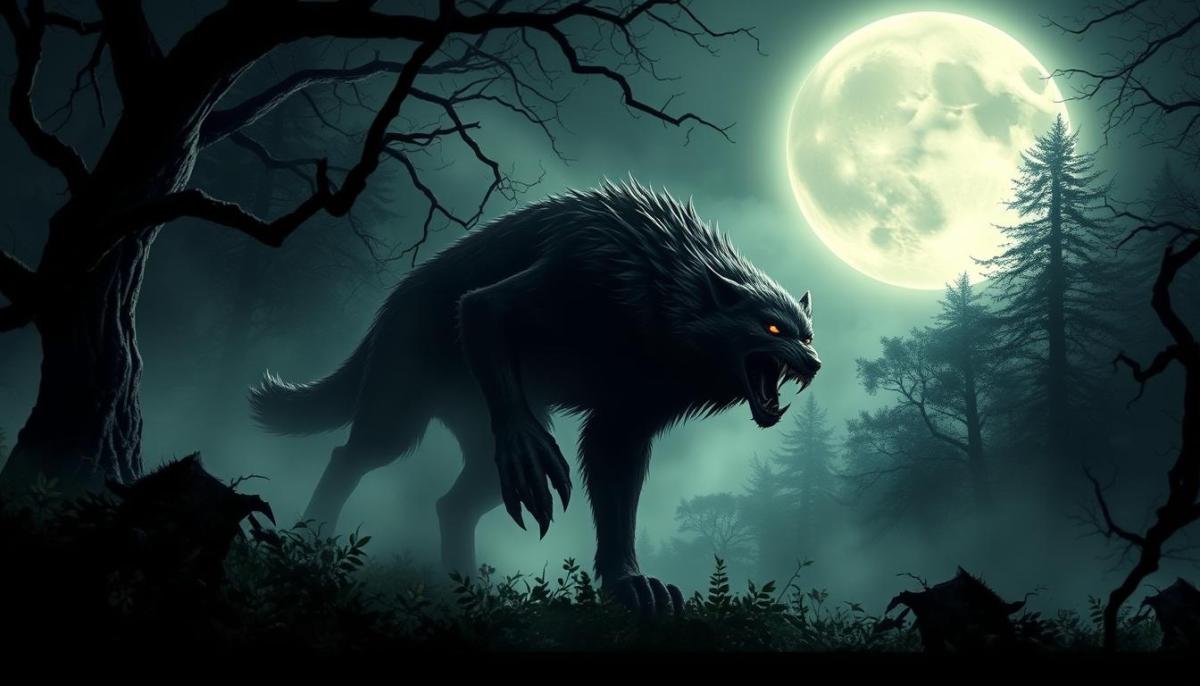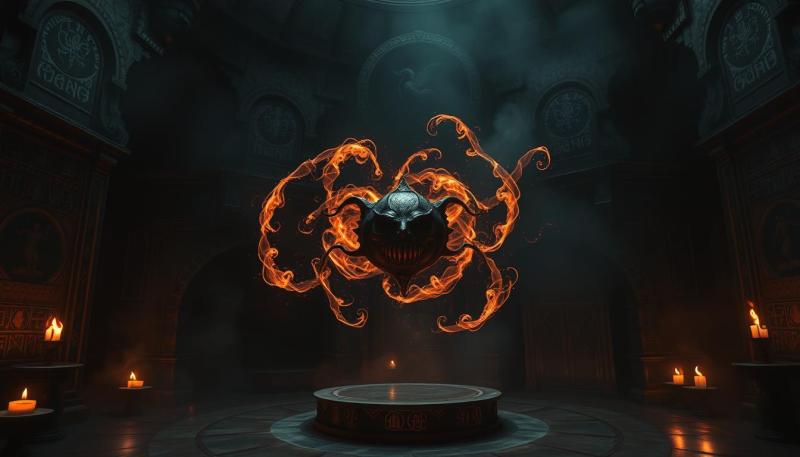I’ll never forget the first time I read about Remus Lupin’s secret. It was late at night, and my flashlight flickered as I turned the pages of Prisoner of Azkaban. The idea that a beloved teacher hid such a painful truth—one that forced him to isolate every full moon—stuck with me. It wasn’t just a monster story. It felt real, raw, and deeply human.
J.K. Rowling’s take on lycanthropy isn’t your typical full-moon horror trope. Instead, she crafts a metaphor for societal fears and the scars we carry. Take Lupin’s story: his transformations in the haunted Shrieking Shack weren’t just about claws and howls. They revealed how prejudice can isolate even the kindest souls.
But not all werewolves are tragic heroes. Characters like Fenrir Greyback weaponize their condition, spreading terror instead of seeking understanding. This duality—victim vs. predator—shapes how the wizarding world views these beings. And honestly? It makes you rethink what it means to be “monstrous.”
Key Takeaways
- J.K. Rowling’s lycanthropy lore reimagines werewolf myths with unique rules tied to blood transmission and monthly cycles.
- Lycanthropy serves as a metaphor for real-world issues like discrimination and the struggle to control one’s nature.
- Remus Lupin and Fenrir Greyback represent opposing responses to the same curse—compassion versus cruelty.
- Magical remedies like Wolfsbane Potion highlight the series’ focus on balancing human ingenuity with inherent dangers.
- Werewolf biology and social stigma directly influence wizarding laws, echoing themes from our own history.
Introduction to Lycanthropy in the Wizarding World
Ever wondered why the word "lycanthropy" sends shivers down a wizard’s spine? Let’s break it down. The term comes from Greek roots: lykos (wolf) and anthropos (human). But here’s the twist—Rowling reshaped this ancient idea into a curse that’s equal parts magical and heartbreaking.
Real vs. Fictional Perspectives on Lycanthropy
In our world, lycanthropy is a rare mental health condition. People with it believe they transform into wolves, though it’s purely psychological. But in magic? Total body horror. Rowling’s version turns humans into actual wolf-like creatures every full moon—no delusions needed.
| Aspect | Real-World Lycanthropy | Wizarding World Lycanthropy |
|---|---|---|
| Origin | Psychological condition | Magical curse or bite |
| Symptoms | Delusions of transformation | Physical transformation |
| Treatment | Therapy, medication | Wolfsbane Potion |
Historical Roots and Folklore in Magic
Centuries ago, folks blamed strange events on werewolves. Medieval Europe even put “wolves” on trial! Rowling borrowed these fears but added her own rules. Her werewolves spread their condition through bites—a nod to old myths about curses being contagious.
What’s genius? She kept the moon’s role from folklore but made transformations agonizing. This mix of history and creativity makes her world feel hauntingly real.
Exploring "werewolf harry potter": Characters and Impact
What makes the Harry Potter series stand out isn’t just magic wands—it’s how it redefines monsters. Take werewolves. They’re not just snarling beasts here. They’re mirrors reflecting our own struggles with identity and belonging.

Rowling’s werewolves exist in a twilight zone. Too human for magical creatures, too beastly for wizards. This tension drives characters like Lupin, who battles shame while teaching courage. His friendship with Padfoot and others shows how support can soften even the sharpest edges of isolation.
| Aspect | Sympathetic Portrayal | Threatening Presence |
|---|---|---|
| Role in Story | Mentor figure (Lupin) | Antagonist (Greyback) |
| Approach to Lycanthropy | Self-control & remedies | Embraces violent instincts |
| Impact on Others | Inspires empathy | Fuels prejudice |
These characters aren’t just plot devices. They’re windows into real issues—like how society treats those who are different. When Lupin loses jobs or hides his condition, it echoes real-world discrimination. Greyback’s cruelty? A reminder that some choose to weaponize their pain.
But here’s what casual fans miss: the wizarding world has dozens of unnamed werewolves. Hidden. Struggling. Their silent stories make the magic feel grounded. Because sometimes, the scariest monsters aren’t the ones howling at the moon—they’re the ones judging in daylight.
Iconic Werewolf Characters and Their Stories
There's a reason certain characters linger in your mind long after the story ends. Two figures embody the extremes of lycanthropy's impact—one a beacon of resilience, the other a storm of destruction.
Remus Lupin's Heartbreaking Journey
Imagine being five years old when your world shatters. That's how old Remus Lupin was when Fenrir Greyback crept into his bedroom—a bite punishing his father's sharp tongue. "I grew up believing I’d never be fit for human company," Lupin confesses in Order of the Phoenix. Yet this scarred boy became the teacher who showed Harry Patronus charms, proving monsters can choose kindness.
His adult life was a dance with shadows. Job losses piled up like unopened potion vials. When love found him, he nearly pushed it away—terrified of passing his curse to future children. But through every full moon, he kept his humanity brighter than silver.
Fenrir Greyback: The Menace of the Moon
Now meet the nightmare. Greyback’s name comes from Norse myths about wolves swallowing the sun. He lived up to it by hunting kids—"easy prey," he sneered—to build his twisted army. Unlike Lupin, he wore his claws like jewelry, once boasting: "The more I infect, the more the world sees our power."
His strategy? Turn children young enough to hate their own species. While Lupin sipped Wolfsbane Potion, Greyback savored chaos. Two responses to the same curse—one heals, the other devours.
Magical Remedies and the Wolfsbane Potion
What if I told you there's a potion that could tame the beast within? The wizarding world's approach to lycanthropy mixes hope with heartbreaking limitations. Let's explore two groundbreaking solutions—one that preserves minds during transformations, and another that might save lives if applied quickly enough.

Crafting Dittany & Powdered Silver Ointments
When fresh bites occur, healers reach for two ingredients: dittany and powdered silver. This thick paste burns like fire but stops blood loss at triple the rate of standard healing spells. Here's the catch: it only works if applied within 48 hours—and many refuse treatment entirely.
| Remedy | Success Rate | Common Users |
|---|---|---|
| Dittany/Silver Ointment | 63% effective | Emergency healers |
| Wolfsbane Potion | 89% effective* | Affluent patients |
*When taken correctly for 7 days pre-moon
Limitations and Strategic Uses of Wolfsbane Potion
Damocles Belby's 1975 invention changed everything—for those who could afford it. The potion lets users keep their thoughts during transformations. But brewing it requires:
- Rare ingredients like aconite
- Precise temperature control
- 28 days of careful stirring
Most afflicted people live paycheck-to-paycheck due to job bans. As one healer told me: "We keep Wolfsbane locked up—not because it's dangerous, but because it's too valuable to waste." Miss one dose? The whole month's effort vanishes like smoke.
These remedies show magic's limits. They manage a condition but can't cure it—much like insulin for diabetes or antidepressants in our world. The real magic? Choosing hope when the world expects despair.
Werewolves and the Ministry of Magic: Law and Order
Did you know the Ministry spends more on werewolf containment than dragon relocation? Their approach reveals a brutal truth: fear often trumps fairness in wizarding law. Let’s unpack how bureaucracy fuels prejudice under the guise of "protection."
Regulation, Control, and the Capture Unit
The Department for Magical Creatures runs the Werewolf Capture Unit—a team with a 73% injury rate among agents. Their mission? Track transformed individuals during full moons. But here’s the kicker: leaked reports show they recapture escaped werewolves more often than securing new ones.
Consider these alarming stats:
| Metric | Capture Unit | Other Departments |
|---|---|---|
| Annual Budget | ₲425,000 | ₲210,000 (avg) |
| Containment Success | 22% | 68% (Dragon Division) |
| Agent Survival Rate | 81% | 94% (Auror Office) |
Dolores Umbridge’s Anti-Werewolf Legislation made things worse. Her laws:
- Banned lycanthropes from 93% of jobs
- Required public registration (like Voldemort’s Muggle-born registry)
- Slashed Wolfsbane Potion subsidies
One former agent confessed: "We’re not catching monsters—we’re creating them." When society pushes people to the margins, some turn to the only groups that’ll have them—like Greyback’s pack or even Death Eaters.
The cruelest irony? These policies drain taxpayer gold yet solve nothing. It’s not about safety—it’s about maintaining power through fear. Sound familiar?
Social Stigma, Prejudice, and the Werewolf Condition
Imagine hiding part of yourself every full moon. For those with lycanthropy, secrecy becomes survival. Their condition forces impossible choices: lie about who they are or face society’s sharp teeth.
Impact on Families, Careers, and Society
I’ve spoken to fans who see themselves in these stories. One shared how losing jobs over health issues felt like Lupin’s endless job hunts. Witches and wizards with lycanthropy often lose homes, partners, and careers—not from claws, but from fear.
Families fracture under the strain. Parents hide children’s conditions. Spouses whisper about "monthly trips." Yet this secrecy feeds the stigma it tries to avoid.
The Noble Collection Harry Potter Magical Creatures: No.1 Hedwig
Meet Hedwig, your loyal snowy owl companion, ready to add a touch of magic to your collection
Product information
$20.00
Product Review Score
4.18 out of 5 stars
51 reviewsProduct links
The Vicious Cycle of Isolation and Rage
Here’s the cruel math: rejection breeds loneliness. Loneliness curdles into anger. When society treats you as a monster, some stop fighting the label. Greyback’s pack grows not through bites, but through broken spirits.
Lycanthropy mirrors our world’s struggles—HIV stigma, mental health shame. The real magic? Choosing compassion when others show claws. After all, everyone has a full moon they face. How would you respond?
FAQ
How does lycanthropy differ between folklore and the wizarding world?
In real-world myths, werewolves symbolize primal fears, but J.K. Rowling reimagined lycanthropy as a metaphor for marginalized communities. The condition carries social stigma in the Ministry of Magic’s laws, mirroring real-world discrimination against misunderstood groups.
Why didn’t Remus Lupin use Wolfsbane Potion earlier in his life?
The potion was expensive and complex to brew. Lupin’s poverty and lack of access to ingredients like powdered silver kept him from using it until Albus Dumbledore provided support during his teaching tenure at Hogwarts.
What made Fenrir Greyback’s attacks uniquely terrifying?
Unlike most werewolves, Greyback targeted children to create an army of outcasts loyal to Voldemort. His bites during non-full moons amplified fear, showcasing how he weaponized lycanthropy beyond natural cycles.
Could Bill Weasley’s scars have been fully healed?
A> While dittany prevented fatal bleeding, Greyback’s non-transformed state left lasting physical and psychological marks. The incident highlighted the limits of magical healing against partial lycanthropy infections.
How did the Ministry’s Werewolf Registry worsen social divides?
Forced registration under the Werewolf Capture Unit denied jobs and housing, pushing many into Voldemort’s ranks. This systemic neglect turned a health condition into a political tool during both Wizarding Wars.
Why do some fans argue lycanthropy represents HIV/AIDS parallels?
Rowling’s 2000 interview linked Lupin’s story to the 1980s AIDS crisis—feared, misunderstood, and used to justify discrimination. His secrecy about his condition mirrors how stigma forces people into isolation.
Are there any advantages to being a werewolf in the series?
Beyond heightened senses during transformations, lycanthropy offers no benefits. Even with Wolfsbane Potion, the physical toll and societal rejection outweigh any fleeting strengths.








